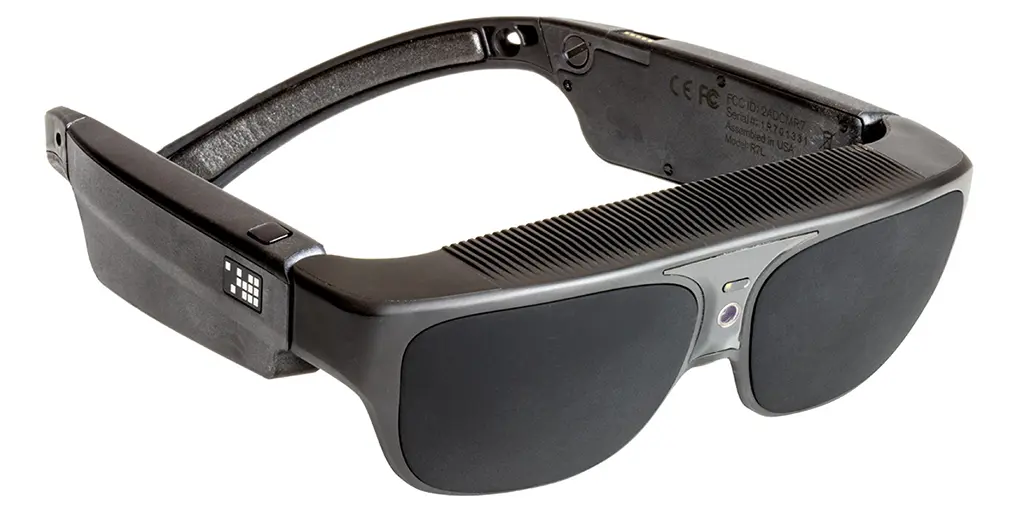OCR Devices for the Blind: Breaking Barriers with Optical Character Recognition
Wiki Article
Discover Advanced Assistive Instruments for People With Aesthetic Problems
The landscape of assistive technology for people with visual problems is evolving quickly, providing an array of innovative gadgets that boost autonomy and engagement. From smart glasses that perfectly combine aesthetic input with auditory assistance to innovative navigation applications that redefine spatial awareness, these devices are improving opportunities.Smart Glasses Innovations
Smart glasses stand for a considerable advancement in assistive modern technology for individuals with aesthetic disabilities. Furnished with cameras and sensing units, clever glasses can record real-time aesthetic details, which is then processed and shared to the individual with audio responses or haptic experiences.
Moreover, innovations in man-made knowledge have actually better improved the capacities of clever glasses. Artificial intelligence algorithms can identify faces, read text, and determine items, making them very useful tools for day-to-day tasks. Users can receive auditory signs that give context about their setting, cultivating self-reliance and self-confidence.
Furthermore, the ergonomic layout and light-weight nature of many smart glasses make them suitable for prolonged usage, ensuring comfort while improving functionality. As these tools continue to evolve, they hold the possible to revolutionize the method people with visual disabilities experience their day-to-day lives, connecting the space in between availability and innovation. The ongoing r & d in this field promise to broaden the possibilities for clever glasses, making them an essential part of modern-day assistive gadgets.
Navigating Apps and Devices
Countless navigating applications and devices have become important sources for individuals with visual problems, considerably improving their capability to traverse unfamiliar environments. These technologies leverage general practitioner functionality, audio signs, and real-time information to offer customers with exact navigating support.One prominent instance is the Aira application, which attaches users to trained agents who can give visual summaries of surroundings and navigation support via an online video clip feed. This solution improves the customer's spatial understanding and self-confidence while navigating. One more significant device is Seeing Eye GPS, which supplies voice-guided navigating and sights, enabling customers to access important details concerning their environments.

As technology proceeds to development, the development of more innovative navigating tools guarantees to additional encourage individuals with aesthetic problems, promoting smooth movement and integration right into diverse environments. Such advancements contribute in promoting an extra comprehensive society.
Braille Modern Technology Improvements
In recent times, improvements in Braille modern technology have dramatically changed how individuals with aesthetic problems gain access to info and involve with the globe around them. The advancement of portable Braille displays has reinvented analysis by enabling individuals to link wirelessly to computers, tablets, eye doctor is an optometrist and smart devices. These gadgets transform text right into Braille in real-time, allowing seamless interaction with digital web content.
Additionally, ingenious Braille printers have actually emerged, improving the manufacturing of tactile products. Modern embossers are faster and more reliable, permitting the rapid development of Braille files and educational materials. This effectiveness reduces the moment and price connected with creating Braille resources, making them a lot more accessible to institutions and organizations.
Additionally, the combination of Braille with other modern technologies, such as fabricated intelligence and artificial intelligence, has opened new opportunities for tailored knowing experiences. Voice acknowledgment and synthesis modern technologies can complement Braille, providing an inclusive method to info circulation.
As the need for inclusive education and learning and work environment settings expands, these technical improvements play a critical duty in encouraging individuals with visual problems, ensuring they have equal accessibility to information and possibilities in numerous elements of life.
Wearable Instruments for Self-reliance
A growing selection of wearable devices is boosting independence for people with aesthetic problems, supplying innovative solutions that enhance navigation and everyday living. Braille displays and notetakers. These tools use advanced technologies to provide real-time feedback and support, promoting autonomy in numerous environments
Wearable technology also consists of smartwatches that can be set with ease of access attributes, allowing customers to get alerts, track their areas, and even require help with the touch of a button. Some gadgets include artificial knowledge to evaluate the setting, offering audio descriptions of nearby objects or people.
Voice-Activated Assistive Solutions
Leveraging voice-activated assistive solutions has changed the landscape of assistance for individuals with visual disabilities, giving hands-free interaction and access to a variety of tasks. These technologies make use of natural language processing and expert system to enable individuals to perform daily tasks with simple voice commands.
Furthermore, current innovations in voice recognition precision have actually improved the user experience significantly, fitting diverse accents and speech patterns. This inclusivity makes certain that even more people can take advantage of these technologies, fostering a better sense of autonomy.
Conclusion
To conclude, the development of innovative assistive tools dramatically improves the self-reliance and top quality of life for individuals with visual impairments. Developments such as clever glasses, navigation applications, Braille modern technology, wearable devices, and voice-activated solutions collectively foster a more comprehensive atmosphere. These technologies encourage users to navigate their surroundings with confidence and engage more completely with the world, inevitably advertising greater access and equal opportunities for people dealing with aesthetic difficulties.The landscape of assistive technology for individuals with aesthetic impairments is developing swiftly, providing a variety of ingenious tools that boost freedom and interaction.Smart glasses represent a substantial development in assistive modern technology for individuals with aesthetic disabilities. As these tools proceed to evolve, they hold the potential to transform the way people with visual disabilities experience their day-to-day lives, linking the gap in between availability and technology.In recent years, improvements in Braille modern technology have considerably changed just how individuals with visual impairments accessibility details and engage with the world around them. These innovations encourage users to navigate their environments with confidence and engage even more fully with the globe, ultimately promoting higher accessibility and equivalent opportunities for individuals dealing with visual obstacles.
Report this wiki page